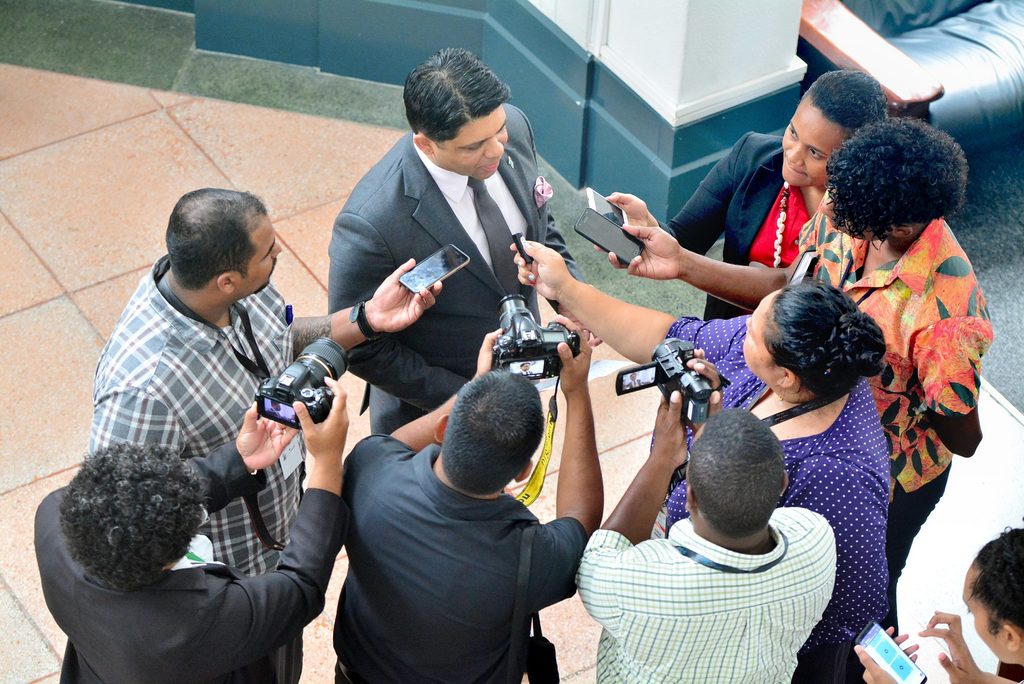THE 2025 World Press Freedom Index, released last month by Reporters Without Borders (RSF), paints a troubling picture of global media independence, with economic fragility now emerging as the foremost threat to press freedom.
For the first time since its inception, the RSF Index classifies the global state of journalism as a “difficult situation,” marking a historic low in conditions for the practice of free and independent reporting.
The Index, which assesses 180 countries and territories across five key indicators—political context, legal framework, economic conditions, sociocultural environment, and safety—highlights that financial pressures are now outpacing physical violence as the primary force undermining press freedom.
Economic pressures overpowering free expression
While attacks and intimidation against journalists remain a clear and present danger, the RSF report emphasises that financial instability is a more insidious, far-reaching challenge.
Across the globe, newsrooms are grappling with dwindling revenue, opaque public funding mechanisms, advertiser influence, and increasing media ownership concentration.
RSF’s economic indicator has plummeted to its lowest score since the Index’s creation, contributing significantly to the overall downgrade of press freedom worldwide.
Alarmingly, media outlets in 160 out of the 180 countries surveyed are said to be surviving “with difficulty” or “not at all.”
In the Pacific, these trends are not abstract. Local newsrooms are increasingly squeezed by shrinking ad revenues, limited state support, and the overwhelming market dominance of global tech platforms that monopolise the advertising landscape.
This concentration undermines regional storytelling and marginalises indigenous and community perspectives.
Media closures on the rise
According to RSF, media shutdowns due to financial hardship have now been documented in nearly one-third of countries.
This includes not only politically volatile regions like Gaza—where Israeli military action has destroyed press infrastructure and killed nearly 200 journalists—but also traditionally stable democracies such as the United States, Tunisia, and Argentina.
The Pacific region is not immune. While countries like New Zealand remain comparatively well-ranked, their media sectors also suffer from funding cuts and ownership concentration.
In smaller Pacific Island nations, where local news outlets operate on minimal budgets, the risk of collapse under financial strain is acute.
The loss of independent, community-based reporting in these contexts means critical issues—from climate change to development aid—are likely to go underreported or misrepresented.
United States leads economic decline in journalism
The report singles out the United States as a particularly stark example of the downward trend.
The economic indicator for the US has dropped over 14 points in two years, with entire regions now classified as “news deserts.”
Local journalism is eroding rapidly, with over 60 per cent of surveyed media workers in Arizona, Florida, Nevada, and Pennsylvania citing an inability to earn a living wage.
The situation has been further exacerbated by the policies of President Donald Trump’s second term, which RSF claims has intensified hostile conditions for journalists.
Cuts to funding for the U.S. Agency for Global Media and the United States Agency for International Development (USAID) have triggered the closure of multiple international outlets—impacting global access to trusted information and destabilising media in aid-dependent regions such as Ukraine.
Tech giants and ownership concentration
A key contributor to the economic collapse of journalism, the report notes, is the stranglehold of online platforms—Google, Apple, Facebook, Amazon, and Microsoft—over advertising revenue and content distribution.
Global social media ad spending reached $247.3 billion in 2024, a 14 per cent increase on the previous year, absorbing funds that once supported independent journalism.
In parallel, concentrated media ownership in 46 countries further threatens press plurality.
In some cases, media is under full state control, silencing dissenting voices and reducing news to government propaganda.
This dynamic is particularly worrying for Pacific states where a handful of media entities dominate the public discourse, limiting diversity of perspectives and critical reporting.
Press freedom at a global crossroads
For the Pacific, these findings are deeply relevant. As vulnerable island states contend with existential threats like climate change and shifting geopolitical alliances, access to accurate, independent information is more vital than ever. The decline in global press freedom threatens the region’s ability to scrutinise power, protect indigenous rights, and ensure accountability in governance and development.
The 2025 RSF Index is very clear of that fact that journalism is now deemed “difficult” or “very serious” in over half the world’s countries, while fewer than one in four enjoy “satisfactory” conditions.
If left unaddressed, the economic suffocation of the press will not only silence voices, but it will also erode democracy itself.
For Pacific nations and their media institutions, the path forward must involve urgent investment in sustainable journalism, policy reform to promote plurality, and robust resistance to monopolistic digital forces.
As the RSF warns, press freedom can no longer be protected solely by legal rights, it must be underpinned by viable economic foundations. Without them, the fourth estate may fall silent in the very places where it is needed most.
Fiji’s women journalists pose for a group photo during the inaugural WIM conference held in Suva last week. Picture: WIM/Facebook

Left: Without media, the fourth estate may fall silent in the very places where it is needed most. Picture: SUPPLIED



